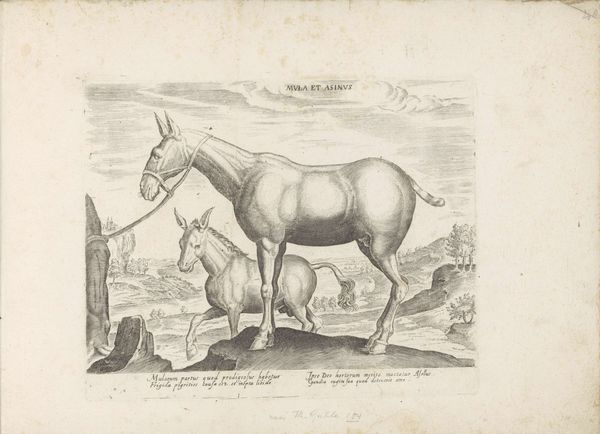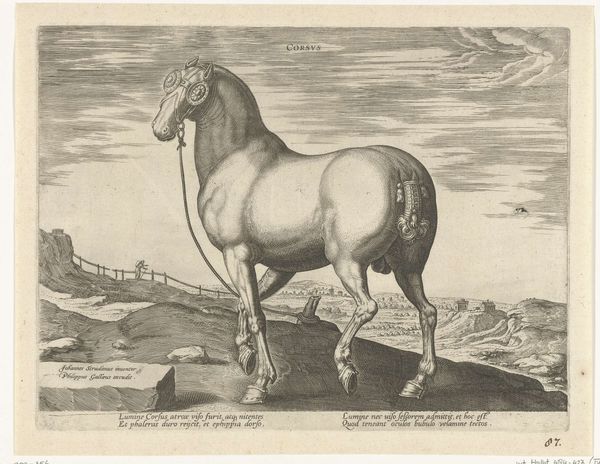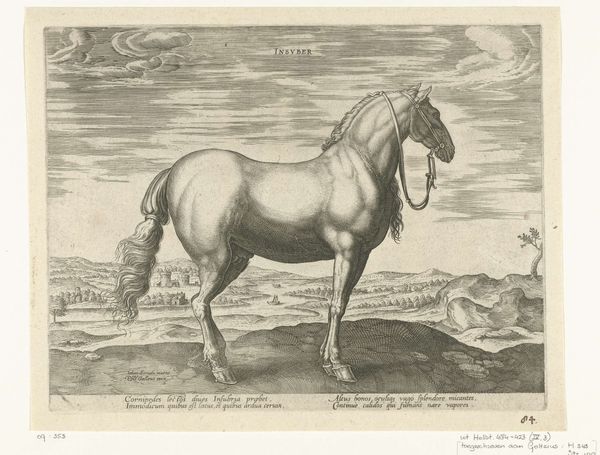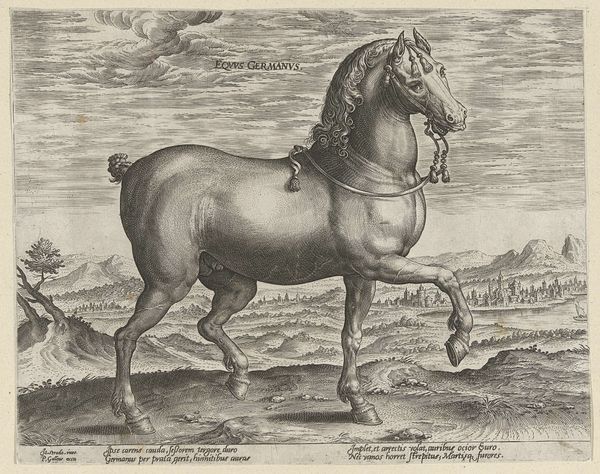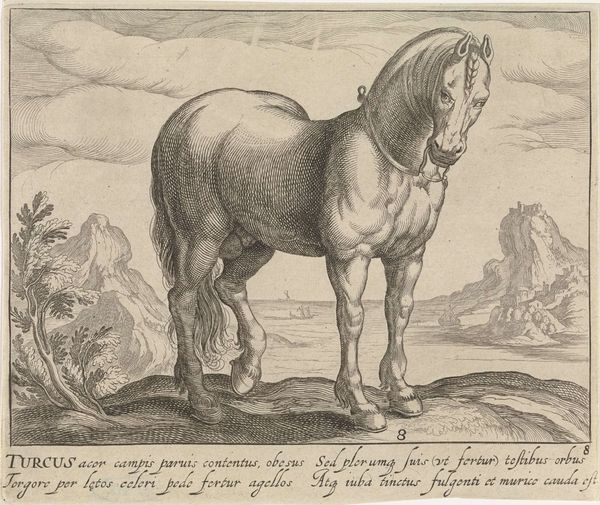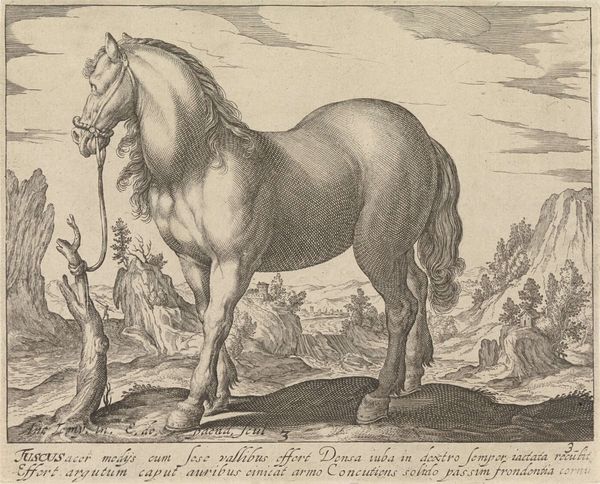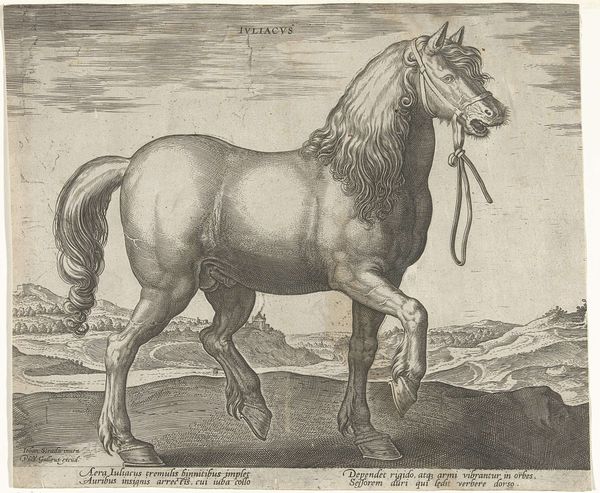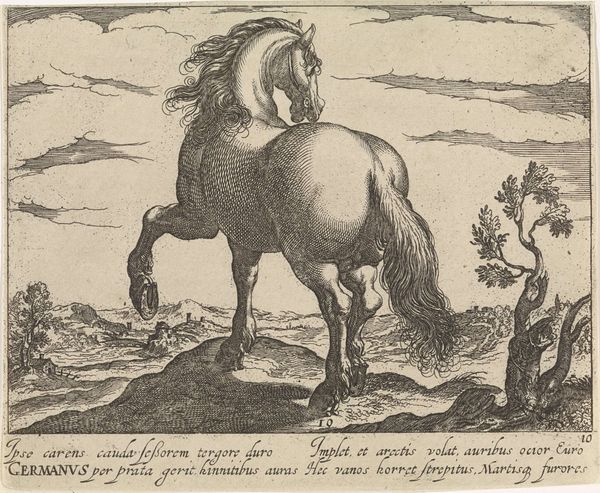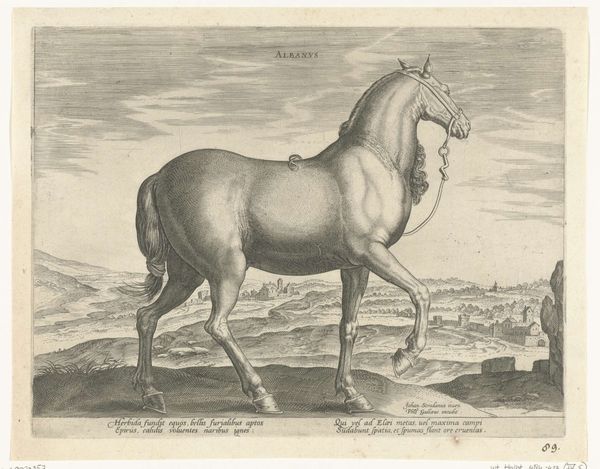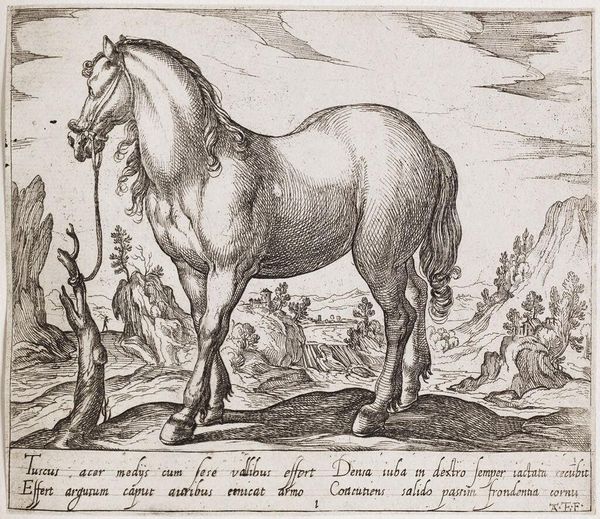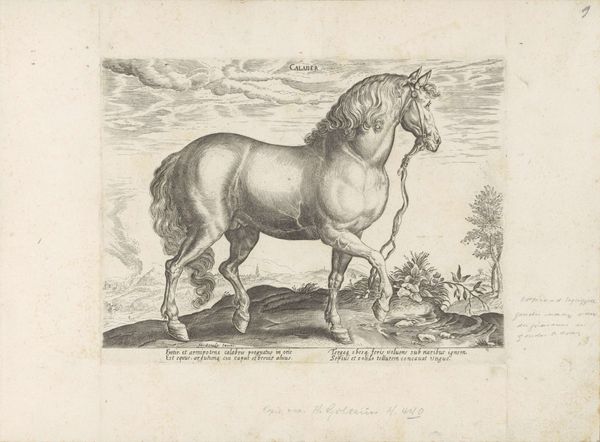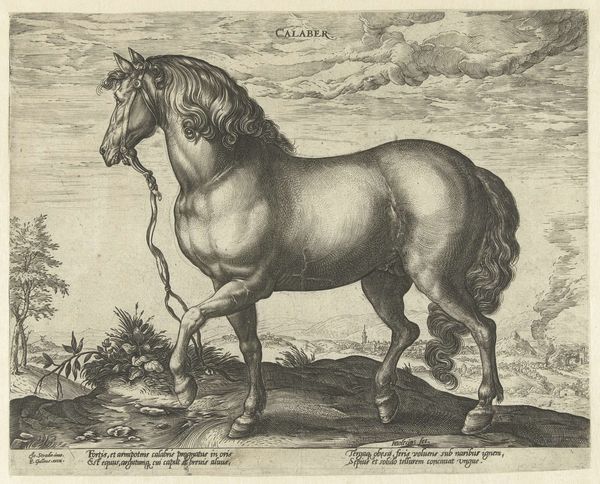
drawing, print, engraving
#
drawing
#
animal
# print
#
old engraving style
#
landscape
#
mannerism
#
portrait drawing
#
engraving
Dimensions: width 267 mm, height 208 mm
Copyright: Rijks Museum: Open Domain
Philips Galle created this engraving, "Mule and Donkey," in the Netherlands sometime before his death in 1612. The image presents us with a curious combination of naturalism and symbolism, typical of the period. Visual codes are deployed here to signal the animal’s qualities. In the 16th century, the mule, a sterile hybrid, could symbolize the unnatural or the unproductive. Galle’s choice to portray the animals against a detailed landscape invites us to consider the relationship between the domestic and the wild. It’s no accident that the animals in this image appear to be well-fed, perhaps even pampered. The presence of a distant castle could indicate the aristocratic ownership. The Latin inscriptions reflect humanist interests, linking the image to classical learning and ideas about animal characteristics. Engravings like this were frequently collected into books, contributing to a growing visual culture. To understand it better, scholars consult emblem books, natural histories, and aristocratic household inventories. In the end, it helps to understand this work as embedded in the social world of its time.
Comments
No comments
Be the first to comment and join the conversation on the ultimate creative platform.
